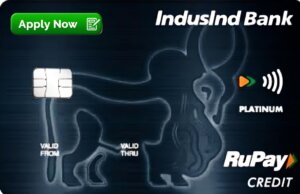
Introduction
Money has always played a central role in human civilization. From shells and livestock in ancient barter systems to the digital cryptocurrencies of today, the way we store, transfer, and accumulate value has evolved dramatically. But as we look at the trajectory of finance and the increasing integration of technology into economics, we begin to ask a provocative question: What is “super money“? The term suggests more than just currency—it implies power, influence, and transformation. This essay explores the meaning, history, evolution, and future of “super money,” examining its societal impact, its technological integration, and what it means for individuals, institutions, and nations.
1. Defining “Super Money”
The term “super money” can be interpreted in multiple ways depending on context. It is not an officially recognized financial term but rather a conceptual way to describe a highly potent form of currency or financial instrument that transcends the limitations of traditional money.
Super money might be:
-
Extremely liquid assets that can be quickly converted into real value.
-
Instruments of economic influence, such as hedge fund capital, sovereign wealth funds, or the immense power of central banks.
-
Digital and decentralized currencies, like Bitcoin or Ethereum, which bypass traditional financial systems.
-
Technologically enhanced financial systems like AI-driven trading bots or programmable blockchain tokens.
Regardless of its form, super money is a tool of transformation—a version of money that doesn’t just facilitate trade, but reshapes entire economies, policies, and power structures.
2. A Brief History of Money
To understand super money, it’s essential to appreciate the evolution of money itself.
Barter to Coinage
Early human societies relied on the barter system, trading goods and services directly. However, this system had limitations, including the lack of a common measure of value. Over time, societies introduced commodity money—items like salt, cattle, or shells that held value and were widely accepted.
The Rise of Coinage
The introduction of metal coinage, especially gold and silver coins, around 600 BCE in Lydia (modern-day Turkey), marked a significant advancement. Coins were durable, divisible, and transportable, making trade more efficient.
Paper Money and Banking
By the 7th century, the Chinese Tang Dynasty began using paper money. This innovation spread slowly across the world and, over time, led to the rise of banks. These institutions began issuing promissory notes and eventually centralized the issuance of money through government-backed central banks.
Fiat Currency and the End of the Gold Standard
In the 20th century, most countries abandoned the gold standard, transitioning to fiat money—currency not backed by a physical commodity but by the trust in a government. This gave governments and central banks immense power to control monetary policy.
3. The Characteristics of Super Money
What differentiates “super money” from regular currency? It’s not necessarily the denomination or form, but the power it holds, the access it grants, and the speed and efficiency with which it can operate.
a. Speed and Mobility
Super money moves fast. With digital transactions, high-frequency trading, and instant cross-border payments, capital flows at the speed of light. Those with access to such systems can act before markets even react.
b. Influence
Super money influences policies, markets, and even geopolitics. Central banks printing trillions in quantitative easing, or hedge funds shorting currencies, can destabilize economies or stimulate recoveries.
c. Accessibility
While traditional money may be limited by geography, regulation, or infrastructure, super money often transcends these barriers. Cryptocurrencies, for example, can be accessed and transferred by anyone with an internet connection.
4. Super Money in the Modern Economy
In today’s financial world, several forms of super money exist. They shape not only how individuals invest but also how nations strategize economically.
a. Central Bank Power
Perhaps the most significant example of super money is the influence of central banks. The U.S. Federal Reserve, the European Central Bank, and the Bank of Japan collectively hold trillions in assets. Their policies affect global interest rates, inflation, and employment.
When central banks decide to inject money into the economy through quantitative easing, they essentially create super money—money with the power to lift markets or signal economic shifts.
b. Sovereign Wealth Funds
Sovereign wealth funds (SWFs), owned by national governments, manage investments worth trillions. Countries like Norway, China, and Saudi Arabia use these funds to invest globally. Their capital can reshape industries, influence international markets, and even buy stakes in other nations’ infrastructure.
c. Cryptocurrencies and Blockchain
Bitcoin, Ethereum, and other cryptocurrencies have introduced a decentralized form of super money. They’re immune to inflationary pressures from central banks, can be transacted peer-to-peer, and offer programmable features through smart contracts.
Though volatile, crypto assets are increasingly viewed as legitimate investment vehicles. Blockchain technology also introduces tokenized assets, where anything from real estate to art can be digitized and traded globally—opening up a new class of super money.
d. Artificial Intelligence in Finance
AI-driven trading platforms now execute billions of dollars in trades based on predictive models and real-time data analysis. These systems represent a new frontier of super money—where decision-making is faster, more informed, and often more profitable than traditional human-led investments.
5. The Risks and Ethical Concerns of Super Money
With great power comes great responsibility—and super money carries significant risks.
a. Inequality and Accessibility
Super money is often in the hands of the few: institutional investors, governments, and wealthy individuals. This creates a widening wealth gap, where the rich can leverage their money for greater returns, while the poor have limited access to high-yield opportunities.
b. Market Manipulation
Entities with super money—like large hedge funds—can manipulate markets. Short-selling, aggressive buyouts, or speculative bubbles can create instability, sometimes at the expense of average investors.
c. Loss of Control by Nation-States
Decentralized super money like cryptocurrencies can undermine national control over currency. Countries with weak regulatory frameworks may struggle to enforce laws or collect taxes when value can easily be moved across borders.
d. Security and Privacy Risks
With digital and programmable money, comes the risk of cyber attacks, fraud, and surveillance. A financial system built on digital ledgers and AI is only as secure as its weakest line of code.

6. Super Money and the Individual
So, what does super money mean for the everyday person?
a. Financial Literacy is Power
In a world of super money, understanding finance is no longer optional. Knowing how markets work, what inflation is, and how to invest wisely can be the difference between financial freedom and lifelong debt.
b. Opportunities in Decentralization
The rise of blockchain and fintech platforms has democratized access to financial tools. Micro-investing apps, DeFi platforms, and global payment services allow more people to participate in wealth-building.
c. Personal Branding and the Creator Economy
Today, individuals can generate their own form of super money through platforms like YouTube, Substack, Patreon, and NFTs. The monetization of personal content has created millionaires from previously invisible creators.
7. The Future of Super Money
Looking ahead, several trends are poised to reshape how we define and use super money.
a. Central Bank Digital Currencies (CBDCs)
Governments are exploring the introduction of digital versions of their currencies. These would combine the security and trust of traditional fiat with the efficiency and programmability of blockchain.
CBDCs could revolutionize payment systems, enhance cross-border trade, and reduce transaction costs. However, they also pose questions about surveillance and monetary control.
b. Tokenization of Everything
Assets will increasingly become tokenized—from stocks to real estate to intellectual property. These tokens can be traded 24/7, fractionalized for small investors, and programmed for royalties or usage rights.
This trend could unlock trillions in liquidity, creating a new layer of super money accessible to more people.
c. AI-Powered Finance
Financial advisors, investment strategies, and even personal budgeting will be increasingly guided by AI. This shift could enhance decision-making, reduce costs, and personalize wealth-building strategies—making super money work smarter, not harder.

8. Philosophical Reflections: Does Super Money Make Us Super?
While super money offers immense potential, it also challenges our values. Are we building a system where wealth is concentrated, or one where everyone has a fair shot? Does faster money mean better lives—or just faster burnout?
As we create more sophisticated forms of money, we must ask ourselves: What is the purpose of wealth? Is it merely to accumulate, or to improve lives?
True economic progress is not just about access to super money, but about what we do with it.
Conclusion
Super money is more than just a financial concept—it is a lens through which we view the intersection of power, technology, and humanity. From central banks and hedge funds to digital currencies and AI-driven trading, the forces that shape global wealth are growing in complexity and influence.
Yet within these forces lies immense potential. If used wisely, super money can democratize access to opportunity, streamline economic systems, and empower individuals in ways never seen before. But if mismanaged, it can also deepen

